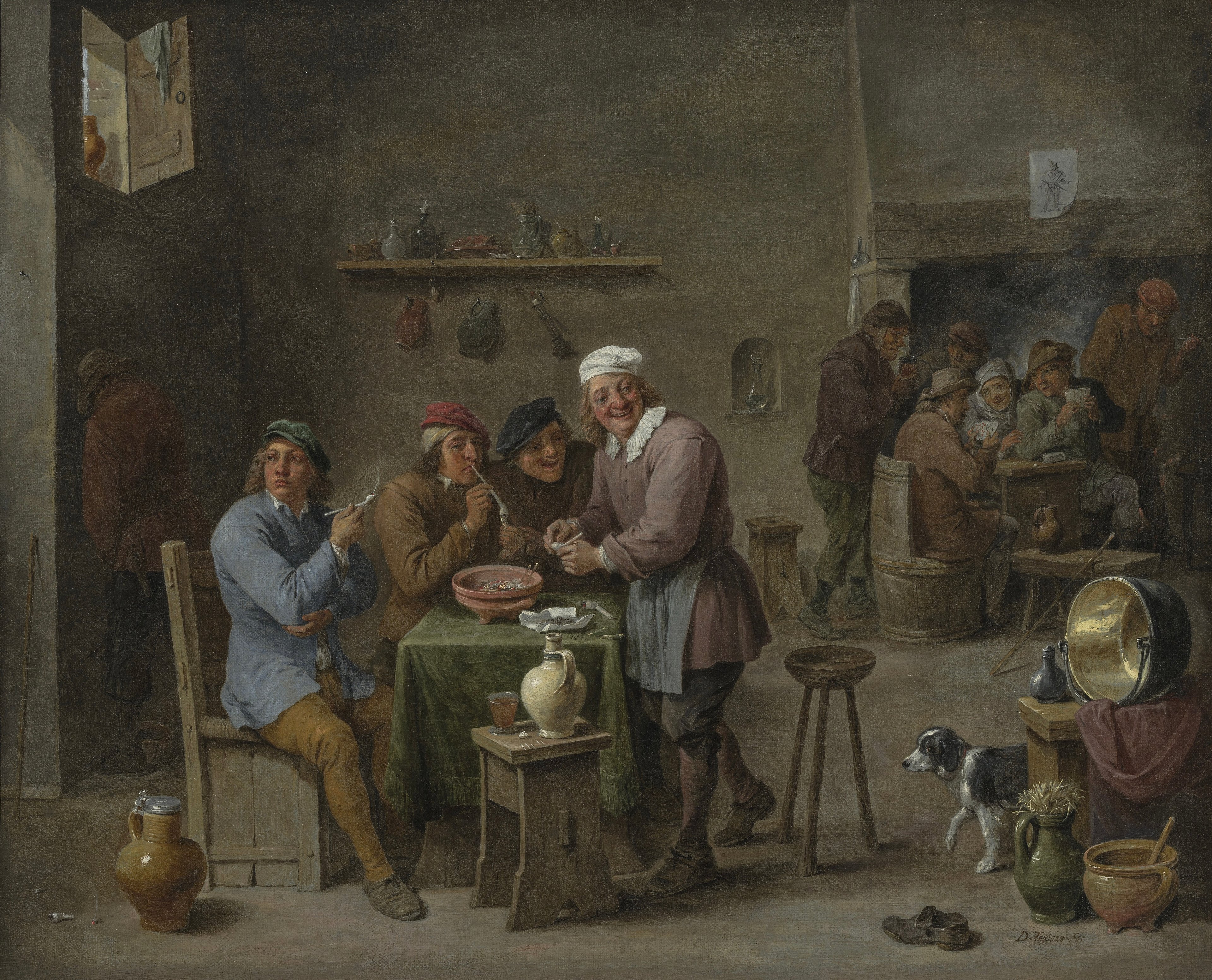
The Dutch peasant genre, influenced by Pieter Bruegel the Elder, depicts rural life between work, celebration and excess. David Teniers the Younger, its most important representative, avoided grotesque and exaggerated depictions of rural life. As a court painter and curator, he was also active outside this genre.
The peasant genre
The Dutch peasant genre is mainly associated with the work of Pieter Bruegel the Elder – and it is certainly true that his inventiveness and enthusiasm for telling a good story led the way for subsequent generations working in this field. Apart from the everyday reality of life as a peasant, the attachment to the soil and the change of the seasons, the subject under depiction here is a distinctively rural culture of celebration with its excesses such as immoderation and outbreaks of violence which always gave rise to satire in urban circles. German and Dutch engravers repeatedly picked up on such themes in the 16th century.
In addition to the village streets and squares, typical settings for the pictorial action are rural interiors such as barns and taverns, which of course seem like neutral stage scenery here. They indicate that instead of being a social reportage, this is more about the implementation of constantly recurring standards. Unlike his contemporary colleagues who worked on the same themes (such as Adriaen Brouwer), the painter dispensed with caricature and grotesque exaggerations. The peasants appearing on David Teniers’ paintings for celebrations or alcoholic carousals usually behave within the common norms that prevailed in urban circles.
David Teniers the Younger was the most important exponent of the Flemish peasant genre. His work is not limited to the subject area of peasant life. This is also likely to be related to the official position that Teniers held: for example, he acted as curator of the paintings collection which had been assembled by Archduke Leopold Wilhelm, the youngest son of Emperor Ferdinand II, during his governorship in the Spanish Netherlands (1647–1656). The collection eventually arrived in Vienna, where it forms the foundation of exhibits in the Kunsthistorisches Museum today.
Text: Ulrich Becker